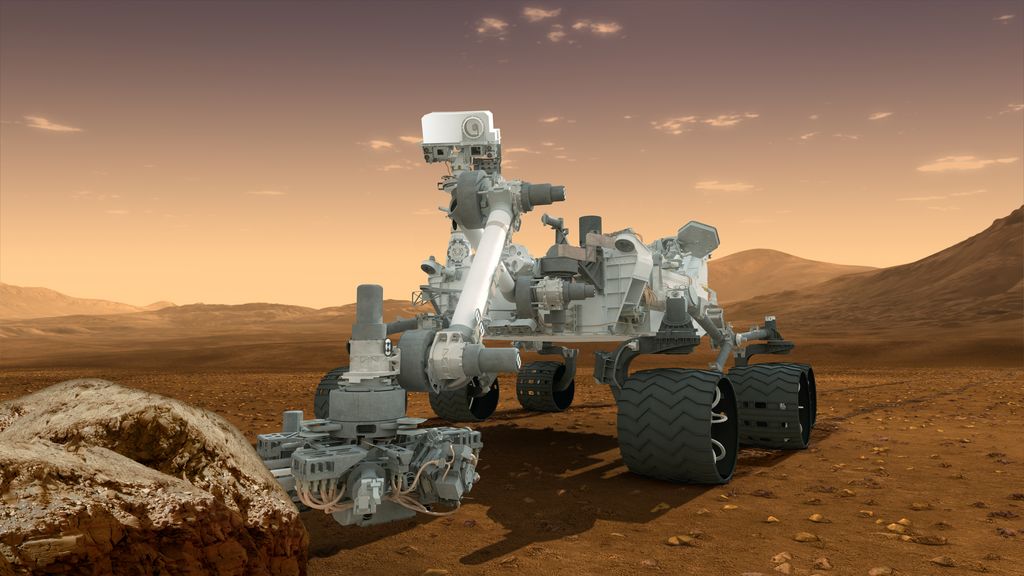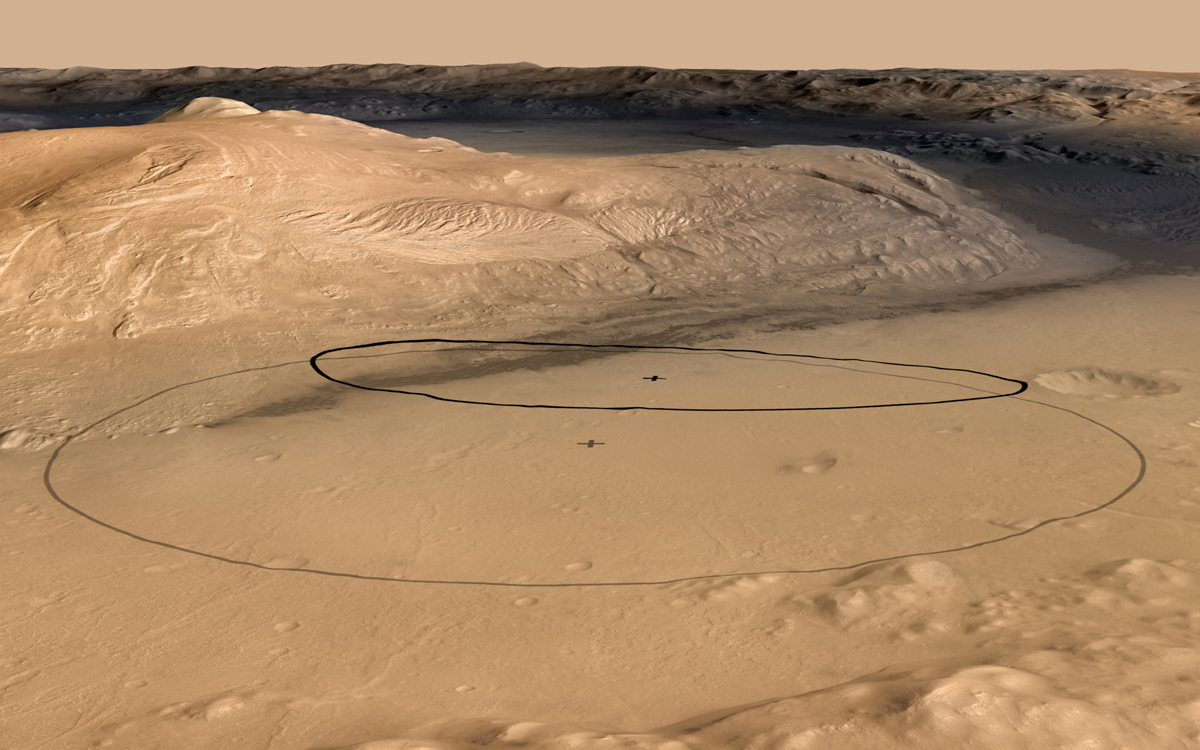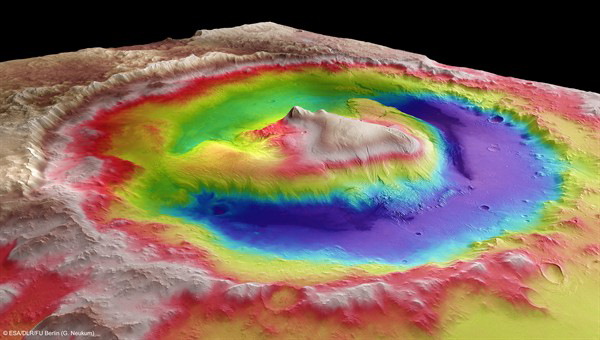Huge Mars Rover Faces Contamination Issue Ahead of August Landing

An unexpected contamination problem has cropped up for NASA's next Mars rover, but scientists are confident the huge robot will still be able to complete its mission after it lands on the Red Planet in August.
NASA scientists discussed the contamination concern and a new Mars landing plan for the car-size Curiosity rover in a teleconference with reporters today (June 11). The contamination issue, they said, concerns the rover's drill.
When Curiosity ultimately bores into a Martian rock, small amounts of Teflon and other contaminants from the drill will likely seep into the sample, NASA officials said. These introduced materials may make it tougher for the Curiosity team to search for organic carbon — the building blocks of life as we know it here on Earth — on the Red Planet.
While researchers are still working to get a handle on the problem, they don't think it will significantly hinder the Curiosity rover or its $2.5 billion mission, which is officially known as the Mars Science Laboratory (MSL).
Right now, the overall sense on the mission team is that "it's not a serious problem, because we see so many potential ways to work around this that we could use," Curiosity lead scientist John Grotzinger, of Caltech in Pasadena, told reporters today. [Curiosity - The SUV of Mars Rovers]
Meanwhile, Grotzinger and his team also said today that they have trimmed down the landing zone for the Curiosity rover in order to bring it closer to its final target: a huge mountain inside Mars' giant Gale Crater.
Drill's leaky seals
Breaking space news, the latest updates on rocket launches, skywatching events and more!
Curiosity launched in late November and is due to touch down in Gale Crater on the night of Aug. 5. After it lands, it will embark on a roughly two-Earth-year mission to determine if the Gale Crater area is, or ever was, capable of supporting microbial life.
The 1-ton rover will use 10 science instruments to get at the question. One of those instruments, known as Sample Analysis at Mars, or SAM, is a chemistry laboratory stripped down to the size of a microwave oven.
Curiosity's robotic arm will feed bits of Martian soil and pulverized rock into SAM, and the instrument will look for signs of organic carbon and other material in the samples. The powdered rock will come from a drill on the arm that can penetrate up to 2 inches (5 centimeters) — the first time any Mars rover has been able to get so deep inside Red Planet rocks.
But it turns out that samples from the drill won't be entirely pristine. Some Teflon from seals within the drill assembly will get mixed in with the Mars dirt during operation, officials said. Another compound, called molybdenum disulfide, will likely contaminate the sample as well.
"Teflon is rubbed off those seals into the material," said Pete Theisinger, MSL project manager at NASA's Jet Propulsion Laboratory in Pasadena. "It then becomes part of the sample."
The presence of Teflon — the trade name for a chemical known as polytetrafluoroethylene — and other contaminants could lower the signal-to-noise ratio of Martian samples, making it tougher for the MSL team to analyze the material that Curiosity picks up, researchers said. [Photos of the Curiosity Rover]
Potential work-arounds
Curiosity scientists learned of the contamination issue shortly before the rover's Nov. 26 launch, Grotzinger said. In the time since, they've been working to gauge the seriousness of the problem and to come up with potential work-arounds.
The researchers have determined that the contaminants don't pose a risk to SAM; the rover's science gear should be able to operate just fine despite the presence of Teflon.
The effect of the contaminants on Curiosity's science operations is still not completely understood, Grotzinger said. It's possible that the impact will be minimal. For example, the Teflon may burn off early in SAM's analysis process, making it easy to identify indigenous Martian compounds (which should stick around longer because they're bound strongly to the rock and dirt).
But there are still mitigation steps to take if SAM's analysis is potentially compromised. Contaminant production appears to be stronger in the drill's percussion mode, when it pounds powerfully and rapidly on Martian rock. So ratcheting the percussion down, or switching over to the more gentle rotary mode, may make the issue more manageable.
If that doesn't work, the MSL team could just take the drill out of commission, solely scooping soil instead of also boring into rock. Curiosity could still access the interior of some Martian rocks by rolling over them with its wheels, Grotzinger said.
But all in all, he's confident that the team will figure things out in the next month or two.
"Those are all scenarios," Grotzinger said. "We're still working through them, but we believe that the SAM instrument has enough capability within it that we can develop some pretty good work-arounds that way."
Everything else is going swimmingly for Curiosity, officials said, and the rover remains on course to touch down on the night of Aug. 5.
And MSL scientists now have a much better idea of where Curiosity will set down, announcing today that they've reduced its potential landing zone from an ellipse 12 miles wide by 16 miles long (19 by 26 kilometers) to a drop zone measuring just 4 miles by 12 miles (6 by 19 km).
The new ellipse is also much closer to the base of Mount Sharp, the mysterious 3-mile-high (5-km) mountain rising from Gale's center. Curiosity aims to climb partway up Mount Sharp, and the mound's lower reaches are a key science target for the MSL team.
The revised landing ellipse should cut Curiosity's travel time signficantly — perhaps by as much as four months, Theisinger said.
"The earlier we get there, the more time we have for science, and the more reliable we feel about the traverse," Theisinger said.
Of course, Curiosity won't be able to do anything on the surface unless it lands safely. Landing a robot on another planet is never easy, and Curiosity's unprecedented touchdown will likely be more anxiety-inducing than most.
Because the rover is so heavy, the MSL team had to come up with a new way to set it down on the Martian surface. A rocket-powered sky crane will lower Curiosity to the ground on cables, then fly off and crash-land intentionally a safe distance away.
It's impossible to perform a full-up test of this system on Earth, whose gravity and atmosphere are so different than those on Mars, but the sky crane has consistently performed well in simulations, officials said.
"You feel the best when you think you've done everything you can do," Theisinger said. "I think the team feels that way, or will feel that way by the time we get to the 5th of August. And so I think we'll be fine."
Follow SPACE.com senior writer Mike Wall on Twitter@michaeldwall or SPACE.com @Spacedotcom . We're also on Facebook and Google+.

Michael Wall is a Senior Space Writer with Space.com and joined the team in 2010. He primarily covers exoplanets, spaceflight and military space, but has been known to dabble in the space art beat. His book about the search for alien life, "Out There," was published on Nov. 13, 2018. Before becoming a science writer, Michael worked as a herpetologist and wildlife biologist. He has a Ph.D. in evolutionary biology from the University of Sydney, Australia, a bachelor's degree from the University of Arizona, and a graduate certificate in science writing from the University of California, Santa Cruz. To find out what his latest project is, you can follow Michael on Twitter.



